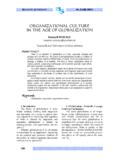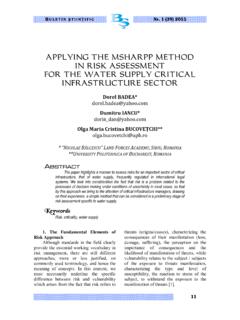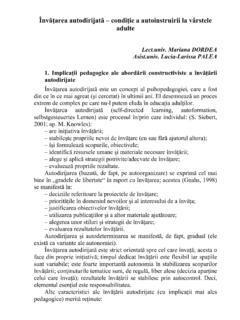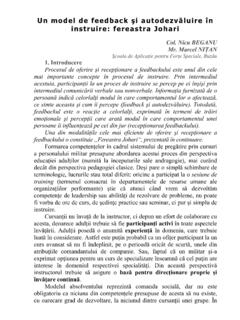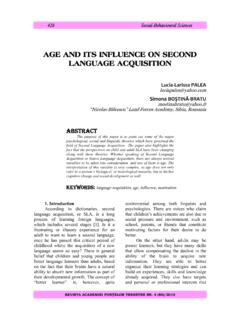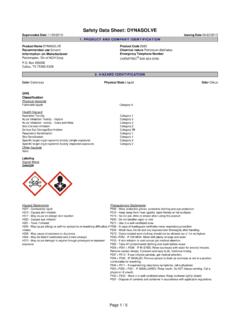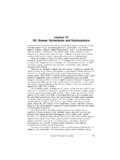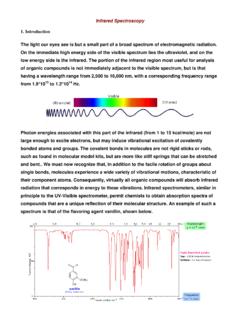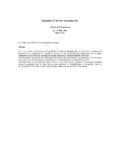Transcription of THEORETICAL STUDY ON ADHESIVES USED IN BALLISTIC ...
1 5 Nr. 1 (39) 2015 BULETIN TIIN IFIC THEORETICAL STUDY ON ADHESIVES USED IN BALLISTIC protection STRUCTURES AND transparent armor Lumini a Cristina ALIL MILITARY TECHNICAL ACADEMY, BUCHAREST, ROMANIA ABSTRACT This article is a brief STUDY conducted on ADHESIVES currently used for manufacturing performance BALLISTIC protection structures. The STUDY landmarks several aspects, such as: types of connections available to achieve multilayer structures based on ceramics, metals and polymers; ways in which ADHESIVES influence the BALLISTIC performance of protective structures; analysis of various types of ADHESIVES used in BALLISTIC protection industry; general considerations in the selection of ADHESIVES for certain types of armor and protective structures; considerations for characterizing, testing and modeling ADHESIVES Keywords ADHESIVES , BALLISTIC protection , transparent armor 1.
2 Introduction The necessity to counteract new and newer types of threats, correlated with the need of increasing ergonomics for the BALLISTIC protective equipment, led to the manufacture of multilayer structures, which combine features of different types of materials to achieve a high performance. The way in which these materials are combined with each other is the key to adress the design and optimization of multilayered BALLISTIC protection structures. One of the most commonly used methods for achieving optimal joint is using the adhesive interlayers. Such combinations may be realised for both common composite armor and transparent BALLISTIC windows. Next, defining the behavior, testing and modeling of the adhesive interlayers in composite armor are crucial for their further development and improvement.
3 Studies made about ordinary armor , as well as about transparent armor , indicate that the ADHESIVES do influencethe BALLISTIC behavior of the composite structure [1]. While the results and informat ion about manufacturing and material properties are generally kept secret, the articles published on this subject indicate that ADHESIVES are commonly used in armor , along with information on the level of development and modeling capabilities of such materials. Most often used ADHESIVES for BALLISTIC protection Nr. 1 (39) 2015 BULETIN TIIN IFIC 6 purposes are the polymers, both thermoplastic and thermoset. In the BALLISTIC protection field, the main role of ADHESIVES is to maintain the homogeneity of the armor before and after impact, and for absorbing the shock through deformation and delamination.
4 These functions require an intermediate contact layer between the adhesive and tough components (glass, ceramic, metal) this needs to be an interface neither too weak, nor too strong. In transparent armor , ADHESIVES must absorb little or no light at all, because any absorption will decrease the transparency of such a composite armor . This applies not only to visible light waves, but also to near infrared range corresponding to certain sensors and night vision devices. 2. Joints for Different Classes of Materials Within the BALLISTIC protection equipments industry, the ADHESIVES serve to the main purpose of uniting or combining two different types of material, in order to ensure the homogeneity, intregrity, and to maintain the original properties (such as transparency).
5 To fully understand the mechanism of adhesive bonding, it is necessary to know that using ADHESIVES for the combination of different types of materials in multilayeredballistic structures is not the only choice, but there are countless joining methods and techniques, and choosing the right one is based on several criteria, such as the type of materials to be combined, their properties, and the properties of the multilayered structure to be obtained. Joining different types of materials such as ceramics, metals, polymers and composite materials is used in armor systems to meet the requirements set by the BALLISTIC threats. Therefore, the quality of joints between the different materials play an important role in the performance of the armor structure , since it must prove resistance to dynamic loads due both to impact and explosion.
6 Increasing the number of layers of different materials used in the same BALLISTIC structure leads to increasing the number of adhesive layers, which further leads to stringent requirements for improved performance. Current methods of jo ining different materials are so mewhat empirical and based on the experience with other products which means that it takes systematic research efforts to understand how does the BALLISTIC performance depend on the joining characteristics. Joining the materials is not always easy. Generally, the joining methods are chosen according to the natureof the materials to be mixed, their geometrical configuration and the performance requirements. Moreover, greater attention is needed in joining different materials to minimize discrepancies in terms of structure and structural discontinuities.
7 The key to achieving optimal joints between materials of different nature, which have different characteristics and bonding properties, is designing a buffer interface in order to neutralize the inconsistencies. When joining surfaces, special attention is needed around the porosity and surface contamination. When superposing two surfaces, the effective contact area is smaller than the apparent contact area, because of the atomic-scale defects roughness and lack of planarity which is valid for any type of surface. This inherent roughness can be corrected by deformation or surface diffusion (direct bonding) or by infiltrating a welding agent between the two surfaces (indirect bonding).
8 Within the armor systems, materials such as ceramics (for example, alumina, silicon carbide or boron carbide) are connected with metals (steel, aluminum, titanium or magnesium), which are further jointed with fibers or polymeric structures, by various indirect or mechanical bonding processes. Selecting a specific technique for manufacturing a certain kind of adhesive is based on a number of factors: the types of materials to be joined; desired function of the joint component for example, resistance; 7 Nr. 1 (39) 2015 BULETIN TIIN IFIC operational temperature; applied mechanical stress (static and dynamic) on the joint; the tightness of the joint; the component design; costs. Normal mechanical joints have weak bonding strength (10 to 50 MPa) and create stress in the ceramic surfaces, limiting flexibility in design.
9 Their use in armor applications is thus limited, except where such conditions can be tolerated. Stress or mass transfer may occur in both direct, as well as indirect bonding. In indirect bonding applications, there is a need for an extra intermediate layer of filler alloy to joint two different materials. Examples of indirect bonding include welding, brazing, gluing and other processes involving the creation of contact between surfaces via intermediate layers. By contrast, direct bonding uses no fillers, the contact being achieved by means of processes involving deformation and diffusion between surfaces. Diffusion bonding requires prolonged exposure to high temperature, while the deformation requires relative movement of the surfaces in contact, simultaneously applying substantial stresses.
10 Thus, although direct bonding methods lead to obtaining strong joints, these may not be suitable for most armor applications because different types of materials have different temperature tolerances and deformation characteristics. The role of the temperature in joining different materials from a given set of surfaces is also an important operational parameter in the selection of the adhesive environment. Most joint processes involve heating the surfaces which, during cooling, develop residual stress due to the mismatch between the elastic modulus and the coefficient of thermal expansion (CTE). Most often, combining ceramic materials with metals in armor applications is achieved by indirect bonding processes, especially by using ADHESIVES .
